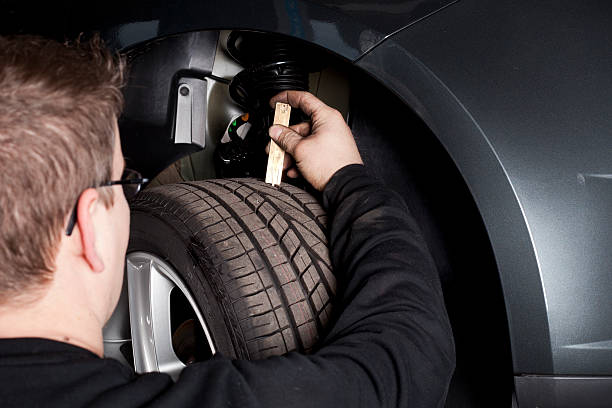Tread Wear
Tread is a rubber that touches the ground and comes in contact with it. Your tire’s tread is an important aspect of driving safety and performance. Each knob, shape, pattern, or groove serves a specific purpose. They enable the tire to grip the road and allow it to brake, accelerate, and turn. As the tread wears, the tire’s effectiveness decreases. It is important to check the tread depth of your tires regularly. When buying a new tire, a treadwear warranty should be considered. Treadwear can have a direct effect on driver safety and vehicle performance. Drivers need to know how to check their tires for tread wear regularly. Tire tread wear can affect more than just how often your tires need to be replaced. How quickly tires lose their ability to divert water from the road’s surface determines how fast they wear. Treadwear can be a problem in safety, cost, and convenience. The treadwear rating is a comparative rating based on the tire wear rate under controlled conditions. It can be found on a government-approved track.
A tire’s tread wear can tell you a lot about its suspension. It will tell you whether the angles, inflation, or components are within tolerance. Common tread wear patterns include over-inflated tires and under-inflated tires. Treadwear indicators should be evenly distributed throughout the main tread grooves. The tire should be replaced if they are not flush with the tread level. The tire will grip more if it has a deeper groove. To ensure maximum safety and performance, tires should be replaced as soon as the tire groove becomes worn.
Tread depth
The tread depth is the distance between the tire’s top and the bottom of its deepest grooves. It is important to know the tread depth. The recommended tread depth is the minimum. Tires with a tread depth equal to or greater than the recommended depth will provide better traction under all driving conditions. Regularly checking your tread depth will allow you to spot any signs of wear or damage, such as cracks or bulges or cuts in the tread. If you have any concerns about your tires, it is a good idea for them to be inspected by professionals. The tire tread depth is crucial to provide the vehicle with the necessary traction. Tread depth is crucial for both grips on wet roads and drainage. Tread depth helps remove water from the area between the tire’s tread and the road surface. If the tread depth is incorrect, the vehicle will have poor regular and wet ground handling. The vehicle’s grip on the road is improved by having a deep tread depth. It also gives it better control over wet surfaces and helps to avoid dangerous situations on slippery surfaces. The vehicle’s tires and the appropriate tread depth are crucial for safety and enjoyment.
Upon installation, new car tires have a tread depth of 8-9mm. They can be legally driven on until the tread depth is at least 1.6mm across 75% and around its circumference. Remember that your tires’ tread depth, design and rubber compound all impact safe driving in snowy and wet conditions. On snowy roads, braking performance can be affected by lower tread depths. The risk of aquaplaning increases on wet roads due to the fading tread depths. Check your tires frequently, reduce your speed on snowy and wet roads, and replace your tires as soon as possible. We are here to make sure your tires are treaded correctly. This is a key factor in driving safety, performance, and safety.

